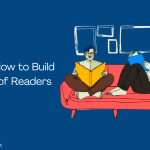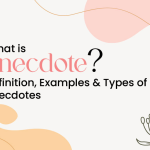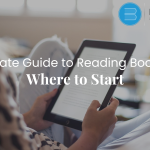Narrative writing is a type of writing that involves telling a story through words. The story can take various forms, such as novels, short stories, memoirs, personal essays, and more. The primary goal of narrative writing is to create a vivid image of a person, place, or event using words, so that the reader can experience it in their mind’s eye.
Narrative writing is different from other forms of writing because it has a plot, characters, and a setting. The plot is the sequence of events that make up the story, and it is what drives the narrative forward. Characters are the people or animals in the story who play a vital role in bringing the story to life, while the setting is the time and place in which the story takes place.
Read: What are the main elements of Creative Writing! Click here to read full article.
Narrative writing can serve various purposes, such as entertaining, educating, persuading, and inspiring. For example, a novel might entertain readers with a thrilling plot and relatable characters, while a personal essay might educate readers by sharing an author’s unique perspective on a topic. A persuasive narrative essay might aim to convince readers to adopt a particular point of view, while an inspiring memoir might motivate readers to overcome adversity and achieve their goals.
Elements of Creative Writing
There are several key elements that make up creative writing, and these apply to narrative writing as well. These elements include:
- Plot: The plot is the sequence of events in a story, and it’s what drives the narrative forward. It includes the exposition, rising action, climax, falling action, and resolution.
- Characters: Characters are the people or animals in a story. They can be major or minor, and they play a vital role in bringing the story to life.
- Setting: The setting is the time and place in which the story takes place. It can be a real or imaginary place, and it helps to create the mood and atmosphere of the story.
- Point of view: Point of view refers to the perspective from which the story is told. It can be first person (I), second person (you), or third person (he/she/they).
- Tone: Tone refers to the writer’s attitude towards the subject matter or audience. It can be serious, humorous, ironic, or sarcastic, among other things.
You may also like: What is upfront fiction? Definition, Traits and Examples
Types of Narrative Writing
There are several types of narrative writing, including:
- Descriptive writing: Descriptive writing is a form of writing that uses sensory details to create a vivid image of a person, place, or thing. This type of writing helps the reader to experience the object being described in their mind’s eye. Descriptive writing is often used in fiction and creative nonfiction, but it can also be used in other forms of writing such as essays, journalism, and technical writing.
For example, consider the following paragraph:
“The sun had set over the ocean, casting a warm glow over the beach. The sand was still warm from the day’s heat, and the sound of the waves crashing against the shore created a soothing rhythm. The salty smell of the ocean mixed with the aroma of nearby food vendors, filling the air with a tempting scent.”
In this paragraph, the writer uses sensory details to create a vivid image of the beach at sunset. The reader can picture the warm sand, hear the sound of the waves, and smell the salty ocean air. This type of descriptive writing allows the reader to experience the setting in a more immersive way. - Narrative essay: A narrative essay is a type of essay that tells a story, often a personal one. It typically has a clear thesis statement that summarizes the main point of the essay. Narrative essays can be written in first or third person and often include dialogue and descriptive details to bring the story to life.
For example, consider the following thesis statement for a narrative essay:
“My trip to Paris taught me the importance of stepping outside of my comfort zone and embracing new experiences.”
In this thesis statement, the writer sets up the main point of the essay, which is that their trip to Paris had a significant impact on them. Throughout the essay, the writer might describe their experiences in Paris, such as trying new foods, visiting famous landmarks, or meeting new people. - Narrative story: A narrative story is a fictional story that tells a tale. It can be written in a variety of genres, including romance, science fiction, and horror. Narrative stories often have a clear beginning, middle, and end, with a plot that develops over time.
For example, consider the following opening sentences of a narrative story:
“Sarah had always loved the old house at the end of the street, with its peeling paint and overgrown garden. She never imagined that one day she would call it home.”
In these opening sentences, the writer sets up the setting and the main character, Sarah. The reader is drawn into the story and is curious to find out what happens next. - Narrative paragraph: A narrative paragraph is a type of writing that tells a story, typically in a few sentences or a few paragraphs. It can be used in various genres of writing, including fiction and creative nonfiction. The purpose of a narrative paragraph is to engage the reader’s imagination and emotions and create a vivid picture of a particular event, person, or place. It often includes sensory details, dialogue, and vivid descriptions to make the story come alive.
For example, consider the following narrative paragraph:
“The old man sat on the park bench, feeding the pigeons with a smile on his face. As he tossed bits of bread to the birds, memories flooded his mind. He remembered when he used to come to this park with his wife, holding hands and laughing. Now she was gone, but the park and the pigeons remained. He took a deep breath, feeling a sense of peace settle over him.”
In this paragraph, the writer tells a story of an old man in a park, feeding pigeons and remembering his past. The sensory details such as the bread, the birds, and the smile on the old man’s face make the scene come alive, and the memories add depth and emotion to the story. This narrative paragraph engages the reader’s imagination and creates a picture of the old man and his experiences in the reader’s mind. - Narrative text: Narrative text is any written material that tells a story, whether it’s fiction, nonfiction, or poetry. It can be found in books, articles, blogs, and other forms of writing. The purpose of narrative text is to entertain, educate, inform, or inspire the reader. Narrative text can be used to convey a message or a theme, and it can be written in various styles and formats, such as a short story, novel, memoir, or essay.
For example, consider the following excerpt from a novel:
“Mary sat on the edge of the bed, staring at the empty space beside her. Her husband had left her six months ago, and she still couldn’t believe it. She had loved him with all her heart, but he had fallen out of love with her. She wiped a tear from her eye and took a deep breath, determined to move on with her life.”
In this excerpt, the writer tells a story of a woman named Mary who is dealing with the aftermath of her husband leaving her. The writer uses sensory details such as the empty space beside her and Mary wiping a tear from her eye to create a vivid picture of Mary’s emotional state. This narrative text engages the reader’s emotions and creates empathy for Mary’s situation.
You may also read: What is Denouement in Literature? Definition and Importance
In conclusion, narrative writing is a powerful tool for storytelling. It can be used for a variety of purposes, from entertaining and educating to persuading and inspiring. By using the key elements of creative writing and the different types of narrative writing, anyone can create a compelling story that engages the reader’s imagination and emotions.
Publish your book for free with BlueRoseONE and become a bestselling author. Don’t let your dream of becoming an author fade away, grab the opportunity now and publish your book – be it fiction, non fiction, poetry or more.
















